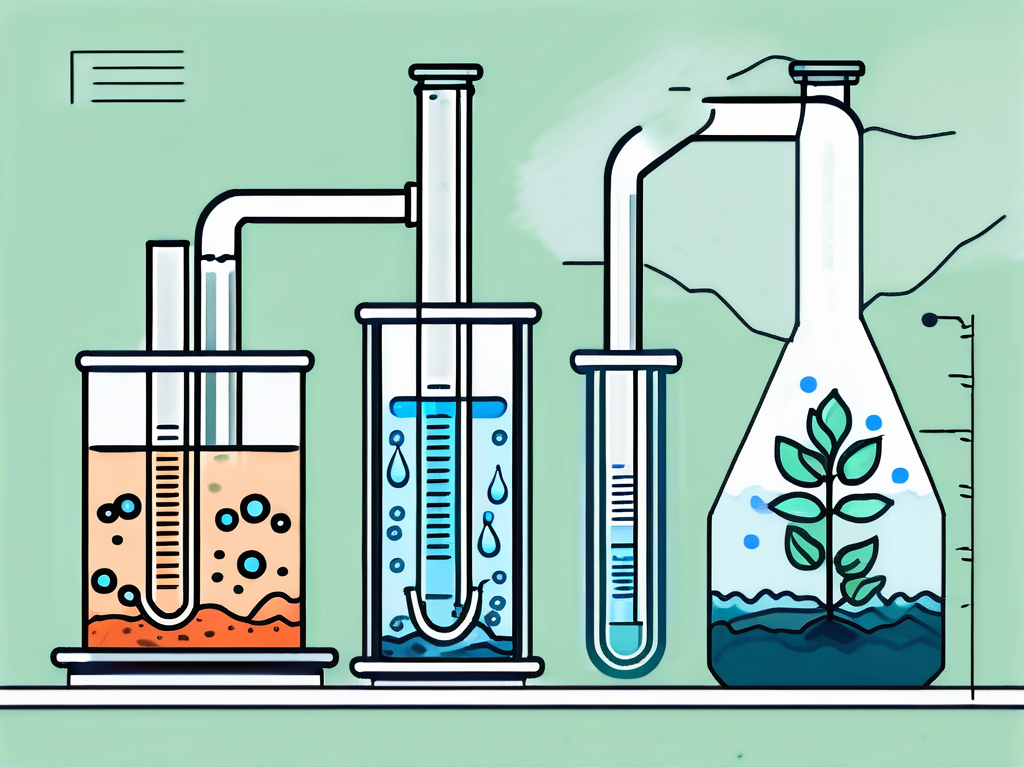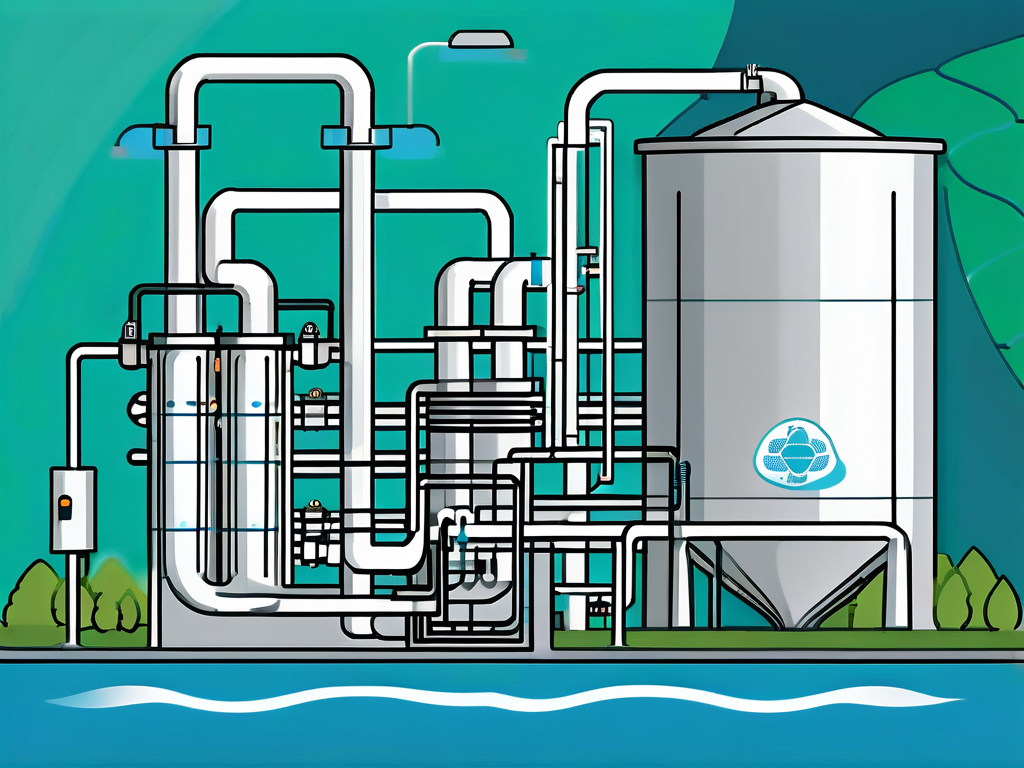
Nitrification: Wastewater Treatment Explained
Nitrification is a crucial process in the treatment of wastewater, responsible for the conversion of ammonia into nitrate. This biological oxidation process is carried out by two types of bacteria, Nitrosomonas and Nitrobacter, which work in tandem to ensure the successful transformation of harmful ammonia into less harmful nitrate. Understanding this process is essential for those involved in wastewater treatment, as it plays a significant role in maintaining the health and safety of both the environment and the public.
The process of nitrification is a two-step process, with each step being carried out by a different type of bacteria. The first step involves the conversion of ammonia (NH3) into nitrite (NO2-) by Nitrosomonas bacteria. The second step involves the conversion of nitrite into nitrate (NO3-) by Nitrobacter bacteria. Both of these steps require specific conditions to be met, including the presence of oxygen and a certain pH level, in order to be carried out successfully.
Understanding the Nitrification Process
The nitrification process is a complex one, involving a series of chemical reactions that take place within the bacteria. These reactions are facilitated by a variety of enzymes, which act as catalysts to speed up the process. The first step of the process, carried out by Nitrosomonas, involves the oxidation of ammonia to nitrite. This is a three-step process, with each step being facilitated by a different enzyme.
The second step of the nitrification process, carried out by Nitrobacter, involves the oxidation of nitrite to nitrate. This is a two-step process, with each step being facilitated by a different enzyme. Both of these processes are exothermic, meaning they release energy in the form of heat. This energy is used by the bacteria to carry out other necessary functions, such as reproduction and movement.
The Role of Nitrosomonas
Nitrosomonas is a type of bacteria that plays a crucial role in the nitrification process. It is responsible for the first step of the process, which involves the oxidation of ammonia to nitrite. This process is facilitated by three different enzymes: ammonia monooxygenase, hydroxylamine oxidoreductase, and nitrite reductase.
Ammonia monooxygenase is responsible for the initial oxidation of ammonia to hydroxylamine. Hydroxylamine oxidoreductase then oxidizes hydroxylamine to nitrite. Finally, nitrite reductase reduces nitrite to nitric oxide, which is then further reduced to nitrous oxide and finally to nitrogen gas. This process is crucial for the removal of harmful ammonia from wastewater.
The Role of Nitrobacter
Nitrobacter is the second type of bacteria involved in the nitrification process. It is responsible for the oxidation of nitrite to nitrate, a process that is facilitated by two different enzymes: nitrite oxidoreductase and nitrate reductase.
Nitrite oxidoreductase is responsible for the initial oxidation of nitrite to nitric oxide. Nitrate reductase then reduces nitric oxide to nitrous oxide, which is then further reduced to nitrogen gas. This process is crucial for the conversion of harmful nitrite into less harmful nitrate.
Conditions Required for Nitrification
The nitrification process requires specific conditions in order to be carried out successfully. These conditions include the presence of oxygen, a certain pH level, and a certain temperature range. The bacteria involved in the process also require a source of energy, which they obtain from the oxidation reactions they carry out.

Oxygen is a crucial component of the nitrification process, as it is required for the oxidation reactions carried out by both Nitrosomonas and Nitrobacter. The process is therefore aerobic, meaning it takes place in the presence of oxygen. The pH level of the wastewater also plays a significant role in the process, as the bacteria require a pH level of between 7.0 and 8.5 in order to function optimally. The temperature of the wastewater is also important, with the optimal temperature range being between 20 and 30 degrees Celsius.
Importance of Oxygen
Oxygen is a crucial component of the nitrification process, as it is required for the oxidation reactions carried out by both Nitrosomonas and Nitrobacter. Without sufficient oxygen, these bacteria are unable to carry out their functions, and the nitrification process is hindered.
The amount of oxygen required for the process varies depending on the concentration of ammonia in the wastewater. The higher the concentration of ammonia, the more oxygen is required. This is because the oxidation of ammonia to nitrite is an energy-intensive process, requiring a large amount of oxygen. Therefore, it is crucial to ensure that the wastewater is adequately aerated in order to provide the necessary oxygen for the process.
Importance of pH Level
The pH level of the wastewater plays a significant role in the nitrification process, as the bacteria involved in the process require a certain pH level in order to function optimally. The optimal pH level for Nitrosomonas and Nitrobacter is between 7.0 and 8.5. If the pH level falls below this range, the bacteria are unable to carry out their functions, and the nitrification process is hindered.
It is therefore crucial to monitor and control the pH level of the wastewater during the treatment process. This can be done using a variety of methods, including the addition of alkaline substances to increase the pH level, or the addition of acidic substances to decrease the pH level. The specific method used will depend on the specific conditions of the wastewater and the specific requirements of the treatment process.
Implications of Nitrification in Wastewater Treatment
The nitrification process plays a crucial role in the treatment of wastewater, as it is responsible for the conversion of harmful ammonia into less harmful nitrate. This process is essential for the protection of the environment and the public health, as it helps to prevent the release of harmful substances into the environment.
However, the nitrification process also has some implications for the treatment process itself. For example, the process is energy-intensive, requiring a large amount of oxygen. This can increase the cost of the treatment process, as it requires the use of aeration equipment to provide the necessary oxygen. The process also produces nitrate, which can be harmful if released into the environment in large quantities. Therefore, it is often necessary to carry out a secondary treatment process, known as denitrification, to convert the nitrate into nitrogen gas, which can be safely released into the atmosphere.
Environmental Implications
The nitrification process has significant environmental implications, as it helps to prevent the release of harmful substances into the environment. By converting harmful ammonia into less harmful nitrate, the process helps to protect the health of aquatic ecosystems, which can be severely damaged by high levels of ammonia.
However, the process also produces nitrate, which can be harmful if released into the environment in large quantities. High levels of nitrate in water bodies can lead to a condition known as eutrophication, which involves the excessive growth of algae and other aquatic plants. This can deplete the water of oxygen, leading to the death of fish and other aquatic organisms. Therefore, it is often necessary to carry out a secondary treatment process, known as denitrification, to convert the nitrate into nitrogen gas, which can be safely released into the atmosphere.
Economic Implications
The nitrification process also has economic implications, as it is an energy-intensive process that requires a large amount of oxygen. This can increase the cost of the wastewater treatment process, as it requires the use of aeration equipment to provide the necessary oxygen. However, the benefits of the process, in terms of the protection of the environment and public health, often outweigh the costs.
In addition, the process can also lead to the production of nitrate, which can be harmful if released into the environment in large quantities. Therefore, it is often necessary to carry out a secondary treatment process, known as denitrification, to convert the nitrate into nitrogen gas. This can also increase the cost of the treatment process, as it requires the use of additional equipment and resources. However, the benefits of this process, in terms of the prevention of environmental damage, often outweigh the costs.
Future Perspectives on Nitrification in Wastewater Treatment
The nitrification process is a crucial component of the wastewater treatment process, and it is likely to remain so in the future. However, there are also a number of challenges and opportunities associated with the process that are likely to shape its future development.

One of the main challenges associated with the nitrification process is the high energy cost associated with the process. This is due to the large amount of oxygen required for the process, which requires the use of aeration equipment. Therefore, there is a need for the development of more energy-efficient methods of aeration, which could help to reduce the cost of the process.
Technological Advancements
Technological advancements are likely to play a crucial role in the future development of the nitrification process. For example, the development of more energy-efficient aeration equipment could help to reduce the energy cost of the process. In addition, the development of more efficient bacteria strains could also help to improve the efficiency of the process.
Another area of potential technological advancement is the development of methods for the recovery of resources from the wastewater. For example, the nitrate produced by the nitrification process could potentially be recovered and used as a fertilizer. This could help to offset the cost of the process, and also contribute to the sustainability of the process.
Regulatory Developments
Regulatory developments are also likely to shape the future of the nitrification process. For example, the introduction of stricter regulations regarding the discharge of ammonia and nitrate could increase the importance of the nitrification process in the wastewater treatment process. On the other hand, the introduction of regulations promoting the recovery of resources from wastewater could provide incentives for the development of resource recovery methods.
In conclusion, the nitrification process is a crucial component of the wastewater treatment process, responsible for the conversion of harmful ammonia into less harmful nitrate. The process is carried out by two types of bacteria, Nitrosomonas and Nitrobacter, and requires specific conditions to be met, including the presence of oxygen and a certain pH level. The process has significant implications for the environment and the economy, and is likely to be shaped by a number of challenges and opportunities in the future.



